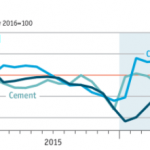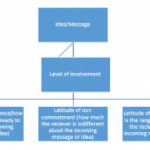SOC 100 Exam 2 Part 3
SOC 100 Exam 2 Part 3
Download The Solution Here
$40.00Add to cart
An industrial society’s economy is largely based on
| manufacturing and industry | ||
| information exchange and service jobs | ||
| offshoring, downsizing, and the growth of multinational corporations | ||
| all of the above |
According to George Ritzer, calculability refers to
| replacing human labor with machines | ||
| quantity over quality | ||
| uniformity of the product | ||
| streamlining the production process |
The scientific management approach to bureaucratic organizations
| measures human dissatisfaction with organizational climate | ||
| measures all aspects of the work process to eliminate inefficiencies | ||
| emphasizes quantity over quality | ||
| emphasizes people, communication, and participation |
The process by which the principles of efficiency, calculability, predictability, and control shape organization and decision making is called
| McDonaldization | ||
| The Iron Law of Oligarchy | ||
| The Hierarchy of Authority | ||
| Goal Displacement |
An ascribed social status is
| A status that dominates how people interact with an individual in a particular setting. | ||
| A status that is assigned to an individual regardless of their unique talents or characteristics. | ||
| A status that is within our power to change. | ||
| A status that applies to only one social situation. |
Which stage of the social construction of reality theory argues that ways of life have become solidified to the point where they seem “real” and therefore outside human creation?
| Bureaucratization | ||
| Institutionalization | ||
| Objectification | ||
| Habituation |
Certain index crime rates have decreased since 2004 in the U.S. What reason did we discuss in class?
| technological innovations such as surveillance cameras and burglar alarms | ||
| increase in police budgets to provide the latest crime fighting equipment | ||
| aging population | ||
| all of the above |
A college student is caught cheating on an exam and is brought before a college-wide disciplinary committee, which decides to expel the student from the school. The committee’s action is an example of
| positive sanctions | ||
| labeling theory | ||
| formal social control | ||
| informal social control |
Which of the following is the best example of a crime that is also a low-consensus norm in the United States today?
| underage drinking | ||
| burglary | ||
| cocaine use | ||
| murder |
Which of the following is the BEST example of primary deviance?
| Taylor gets court fines and probation for shoplifting | ||
| Sara is caught stealing a car and arrested | ||
| Tamara goes to jail for forging checks | ||
| Brad runs naked across campus |
According to Durkheim’s theory of crime and deviance
| crime and deviance are universal in all societies | ||
| crime and deviance are defined by societies | ||
| crime and deviance are functional for societies | ||
| all of the above |
Which of the following sanctions reflects informal social control?
| Miguel having to appear in court for driving under the influence of alcohol. | ||
| Sammie getting a ticket for jaywalking. | ||
| Tony being arrested for possession of marijuana. | ||
| Maria laughing at Jesse because she likes opera. |
Which of the following describes a class stratification system?
| Closed system where most people are peasants or nobles (royalty) | ||
| Closed system where some people are owned by others | ||
| Open system where social rank depends primarily on economic position | ||
| Closed system based on hereditary religious rank that remains fixed and immobile |
What is the definition of Marx’s concept of class consciousness?
| Attitude held by members of a class that does not accurately reflect their objective position | ||
| Set of cultural beliefs and practices that helps maintain status quo | ||
| Awareness by members of a class of their common interests and the need for collective political action to bring about change | ||
| All of the above |
The federal calculation of the poverty line in the U.S. was created in which decade?
| 1960s | ||
| 1970s | ||
| 1980s | ||
| 1990s |
According to Weber, social class position affects your
| freedom | ||
| caste | ||
| life chances | ||
| social mobility |
According to the video on wealth distribution in the U.S., which of the following statements is true?
| When surveyed, most Americans accurately described the country’s distribution of income and wealth. | ||
| Ideally, 9 out of 10 Americans surveyed believe the wealth distribution should be steeper than it currently is. | ||
| Although the wealth is distributed unevenly among the five 20 percent quintiles in the U.S., the differences are minimal. | ||
| The richest 1 percent own more of the nation’s wealth than 90 percent of Americans think the top 20 percent should have. |
While income in the United States continues to be unevenly distributed, the degree of income inequality has declined significantly since 1970.
True
False
Which of the following is NOT a reason for the shrinking middle class?
| increase in nonunion workplaces | ||
| the rise of heavy industry | ||
| outsourcing of industrial jobs globally | ||
| disappearing opportunities for people with little education |
Which theory focuses on why certain people are defined as deviant while others are not?
| cultural transmission | ||
| labeling theory | ||
| control theory | ||
| social disorganization theory |
Beliefs can never be considered deviant.
True
False
What is the main purpose of victimization surveys?
| To confirm the findings of the FBI Uniform Crime Reports. | ||
| To provide evidence in court about crimes that have not been prosecuted. | ||
| To discredit false accusations from actual crimes. | ||
| To provide more information about crime rates since some crimes are significantly underreported. |
Which of the following does Weber consider a negative possible outcome of written rules and regulations?
| abuse of power | ||
| goal displacement | ||
| alienation | ||
| inequality |
Which of the following does Weber consider a negative possible outcome of the division of labor?
| goal displacement | ||
| alienation | ||
| inequality | ||
| abuse of power |
According to Durkheim, mechanical solidarity describes
| simple societies with a minimal division of labor | ||
| complex societies characterized by mutual interdependence | ||
| both of the above | ||
| neither of the above |





